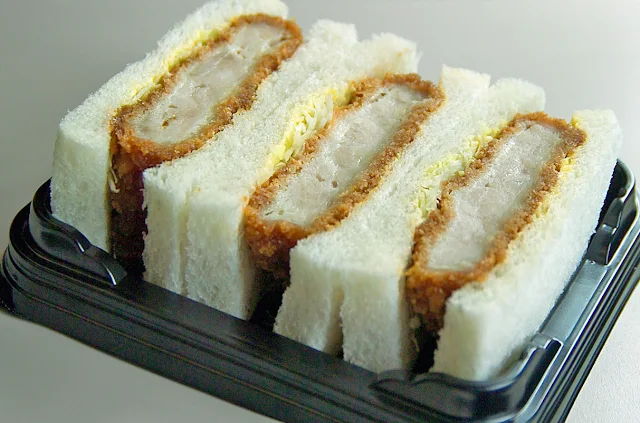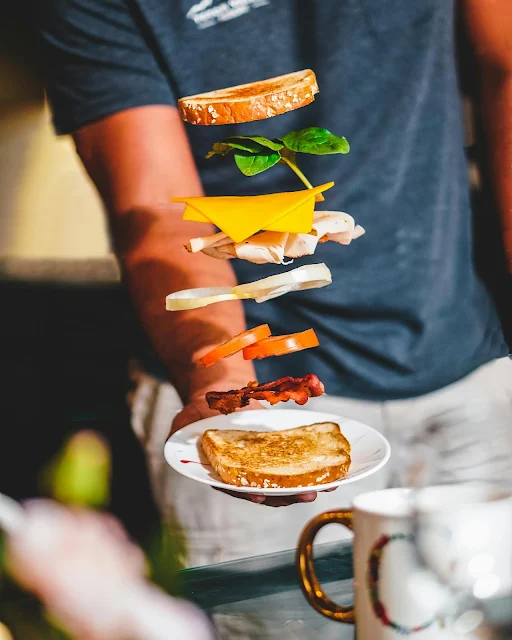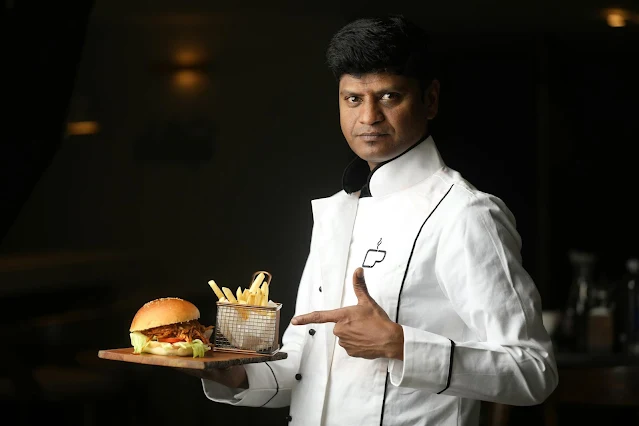Picture this – You are deep into an intense game of cards.
The stakes are high, your opponents are watching your every move but you are
feeling peckish. Leaving the table could mean losing your lucky streak. So, what
do you do? If you are John Montagu, the 4th Earl of Sandwich, you create a meal
so convenient that it becomes an international sensation for centuries to come.
Imagine being so rich, powerful and utterly uninterested in stepping away from a card game that you end up inventing one of the world’s most beloved meals. That’s exactly what happened in the 18th century when John Montagu inadvertently created the modern day sandwich. The story is one of convenience, gambling and an aristocrat who probably didn’t realise he was about to revolutionise lunch forever.
In a moment of sheer practical genius (or sheer laziness depending on how you look at it), he ordered his servant to bring him some meat between two slices of bread. No cutlery, no mess and no need to put his cards down. His fellow gamblers saw the brilliance of this invention and began ordering the same saying “I’ll have what Sandwich is having”. And just like that, the sandwich was born (at least in name). The sandwich, the go-to meal for busy workers, lazy cooks and picnic lovers everywhere, owes it’s existence (or at least it’s name) to a British aristocrat who simply didn’t want to put down his playing cards. But like all good stories, there’s more to it than that.The not-so-humble beginnings of the sandwich
Before we give Montagu too much credit, let’s be clear –
people had been eating bread with fillings for 1000s of years. The variations
already existed.
Ancient Romans – They had a habit of placing meats on
bread to create a portable meal. Though knowing Roman cuisine, they probably
added some fermented fish sauce for extra flair. They also ate bread with
cheese and meats by often using the bread as an edible plate.
Middle-eastern breads – Flatbreads and wraps have
long been used to hold meats or vegetables leading to delicacies like falafel
pitas and shawarma. They had been stuffing pita bread with spiced meats and
vegetables long before the Earl’s time.
 |
| A shawarma wrap |
Jewish tradition – Dating back to ancient times, it included the Hillel sandwich which is a combination of bitter herbs and charoset between pieces of matzo which was eaten during Passover.
Medieval Europe – workers often placed meats and
cheeses onto thick slices of bread which acted as an early version of an
open-faced sandwich.
Old England – Even in England, before the Earl of
Sandwich’s infamous gambling night, people were already eating bread with
toppings.
The 18th century was a time
when trends often started in aristocratic circles before trickling down to the common
folk or the masses. Once the Earl’s upper-class friends started requesting
sandwiches, the trend spread like butter on toast. What Montagu really
did was make the sandwich fashionable.
Man with a name destined for snack-based fame
John Montagu was born in 1718
into an influential and powerful British
family. With a name like Sandwich, one might argue that he was destined to lend
it to a culinary creation. But before he made his mark in the world of food, he
had quite the political career. As the 4th Earl of Sandwich, he held
high-ranking positions in government. He served
as First Lord of the Admiralty twice, helped expand the British Navy and was
even accused of corruption because what’s an 18th-century nobleman without a
bit of scandal? Despite his political and naval career, Montagu had a
bit of a reputation. He was often accused of corruption, laziness and perhaps
most damningly – poor decision-making. However,
it wasn’t his naval career or political dealings that cemented his legacy. No,
that honour belongs to a very specific moment of hunger and laziness.
That legendary card game
The most famous version of the sandwich’s origin story takes
place in the 1760s. The story goes that Montagu
was in the middle of an intense gambling session (possibly playing cribbage or
whist both popular card games of the time).
Not wanting to leave the table, lose concentration from the intense hunger or
soil his cards with greasy fingers, he instructed a servant to bring him some
meat tucked between two pieces of bread. The brilliance of this
arrangement lay in it’s efficiency. It allowed
him to eat with one hand and continue playing with the other, setting a
precedent that every multitasker since then has deeply appreciated. The
bread acted as an edible napkin in keeping his fingers clean while allowing him
to continue playing uninterrupted. Seeing his
practical yet delicious meal, others at the table reportedly wanted the same
food too. And just like that, the sandwich was born.
Why it’s a perfect meal
Believe it or not, the sandwich is a marvel of food
engineering. The balance of flavours, ingredients and textures makes it an
efficient and satisfying meal. At first glance, a sandwich seems simple like “just
some bread and a filling”. But there’s real science behind what makes a
sandwich satisfying.
Bread as an engineering marvel and an ultimate edible container
– Bread (especially when toasted) provides an edible yet sturdy structure. It
absorbs moisture while keeping fillings contained and eliminates the need for cutlery
or plates. A well-made sandwich distributes weight evenly, absorbs moisture
without disintegrating (unless you’ve made the tragic mistake of using soggy
bread) and also acts as a convenient edible handle. This is why astronauts on
the International Space Station prefer tortillas over regular bread. It would
be fewer crumbs floating around in microgravity which are a nightmare for
sensitive equipment.
The perfect balance of macronutrients – A well-constructed sandwich typically contains carbohydrates from the bread (which provides quick energy), proteins from cheese or legumes or meats (which keeps you full), fats from avocado or butter or mayonnaise or adding flavour or aiding nutrient absorption and fibre and micronutrients from vegetables (which keep digestion happy). The right sandwich combination can be a well-rounded meal which explains it’s popularity across cultures.
The psychology of handheld food – Studies in food psychology have shown that people enjoy handheld foods because they evoke a sense of comfort and control. When you eat with your hands, you engage more of your senses like experiencing the weight of the food, feeling the texture and instinctively anticipating it’s taste. Eating a sandwich feels casual and satisfying. There is something inherently enjoyable about wrapping your hands around a well-packed meal. So, if anyone ever judges you for eating a sandwich instead of a proper plated meal, just tell them you are engaging in a scientifically superior eating experience.
An ideal balance of flavours and textures – A good sandwich hit’s all the right notes is crunchy (lettuce, pickles or toasted bread), soft (bread or spreads), umami-rich (cheese, meats or mushrooms) and bright plus fresh (herbs, mustard or tomato).
Neuroscientists have even studied why humans love the combination of crunch and softness. The brain finds varied textures stimulating which is why biting into a crisp baguette with a soft filling is so satisfying.
Evolution of the sandwich
By the late 18th and early
19th centuries, sandwiches had firmly taken root in British and European
culture. They became popular in coffeehouses, a staple for gentlemen’s clubs,
and an easy meal for travellers. The Industrial Revolution gave the sandwich an
even greater boost, as factory workers needed quick, portable lunches that
didn’t require utensils.
Fast forward to today, and
sandwiches have become a global phenomenon. Whether it’s the classic British
cucumber sandwich, the American grilled cheese, the Italian panini, or Japan’s
meticulously crafted katsu sando, Montagu’s quick gambling snack has evolved
into countless variations across cultures.
Local goes global
By the late 18th and early 19th centuries, sandwiches had
become a staple in British coffeehouses and social clubs. But it wasn’t just
British aristocrats who loved them. Once the sandwich caught on in Britain, the
sandwich spread (pun intended) all across the world faster than a buttered
baguette sliding off a countertop.
France – The jambon-beurre (butter and ham on a
baguette) became a classic. It was a simple but perfect combination of butter
and ham on a crisp baguette.
 |
| The French jambon-beurre |
The United States – The peanut butter and jelly sandwich became a childhood favourite. Americans turned the sandwich into an art form with creations like the peanut butter and jelly, the grilled cheese and the enormous Reuben.
 |
| The American peanut butter and jelly sandwich |
Japan – They elevated the sandwich with katsu sando made with breaded pork cutlet became a refined culinary treat. It is a delicate yet crispy pork cutlet masterpiece.
 |
| The Japanese katsu sando |
Vietnam – The bánh mì blended French, other Southeast Asian and Vietnamese flavours into an iconic street food.
 |
| The Vietnamese bánh mì |
The Industrial Revolution only increased the sandwich’s popularity since factory workers needed quick portable meals. Now, you’d be hard-pressed to find a country that doesn’t have it’s own version of a sandwich. Today, sandwiches range from the elegant (the classic English cucumber sandwich) to the ridiculous (have you ever seen an American triple-decker club sandwich? It’s a structural hazard).
Sandwich in popular cultures
Over the centuries, sandwich
has become more than just a convenient meal. It is a cultural icon today. From
literary references to television and film, sandwiches pop up everywhere. The
infamous peanut butter and jelly combo, the towering Dagwood sandwich from
comic strips and even Ross Geller’s meltdown over his leftover Thanksgiving
sandwich in Friends. They all show how deeply ingrained this meal is in modern
life.
Even science has had it’s say in the matter. In 2006, British scientists at the Royal Society of Chemistry ruled that a sandwich must consist of at least two slices of bread with filling between them. The hot dog debate rages on but at least we have official confirmation of what qualifies as a sandwich.
Man who left his legacy on both lunch and geography | A legacy that you can eat or visit
John Montagu might not have
set out to change the world,but in a way, he did. His simple desire to keep his
hands free while eating led to the global spread of a food item that is now a
staple in nearly every culture. Whether you are enjoying cheese and ham, a
bacon butty or a towering club sandwich, you have a gambling aristocrat from
the 1700s to thank for it. Next time you take a bite of your favourite
sandwich, spare a thought for the Earl of Sandwich — a man whose legacy proves
that sometimes, the greatest inventions come from the laziest of moments.
Unfortunately, Montagu’s political reputation wasn’t as solid as his culinary one. He was often accused of corruption and his opponents were quick to mock him. Horace Walpole (a famous politician and writer) once described him as the most universally disliked man in the country. Yet despite the controversies, he remained an influential figure in British politics.
 |
| Location of Sandwich Islands |
John Montagu’s legacy isn’t just found in your lunchbox. He also left his mark on the map. In 1778, Captain James Cook, an explorer whom Montagu had supported financially named a group of islands in his honour named the Sandwich Islands. As First Lord of the Admiralty, he was a key supporter of Captain James Cook’s expeditions. Today, we know them as Hawaii. So, in a way, the Earl managed to have both a globally beloved meal and a tropical paradise named after him. Not bad for a man who just wanted to eat without pausing his game.
Let’s take a moment to appreciate the sheer range of this man’s legacy. On one hand, he’s remembered for expanding the British Navy and funding global exploration. On the other, he’s the guy who made it socially acceptable to shove some ham between two slices of bread and call it a meal. Honestly, if you had to choose between being remembered for a food that billions of people eat every day or for your naval policies, which would you pick? Imagine having both a snack and an entire tropical paradise named after you. That’s legacy done right.
A life-lesson from the Earl of Sandwich
The sandwich is arguably one of the greatest food inventions
of all time. It’s endlessly adaptable, portable and suit’s every budget. You
can grab a simple cheese sandwich for pennies or indulge in a gourmet
truffle-laden creation that costs as much as a small car. Whether you are a
student surviving on peanut butter sandwiches, a busy executive eating a deli
wrap between meetings or a late-night snacker crafting a questionable fridge
sandwich, you are participating in a tradition that dates back to an
18th-century gambler who just wanted to keep his hands free.
Montagu never could have predicted that his quick meal hack would become a cultural and culinary phenomenon in the future. But his story teaches an important lesson that sometimes, the simplest ideas are the most enduring. And if you ever feel guilty for not cooking a full meal, just remember that you are simply following in the footsteps of British nobility. Without him, we might still be using both hands to eat like savages.
#sandwich #food #history #origin #earlofsandwich #british #england #english #uk #unitedkingdom #britain #fact #fun #trivia #snack #gambling







_South_Georgia_and_the_South_Sandwich_Islands.jpg)
_South_Georgia_and_the_South_Sandwich_Islands.jpg)











0 Comments